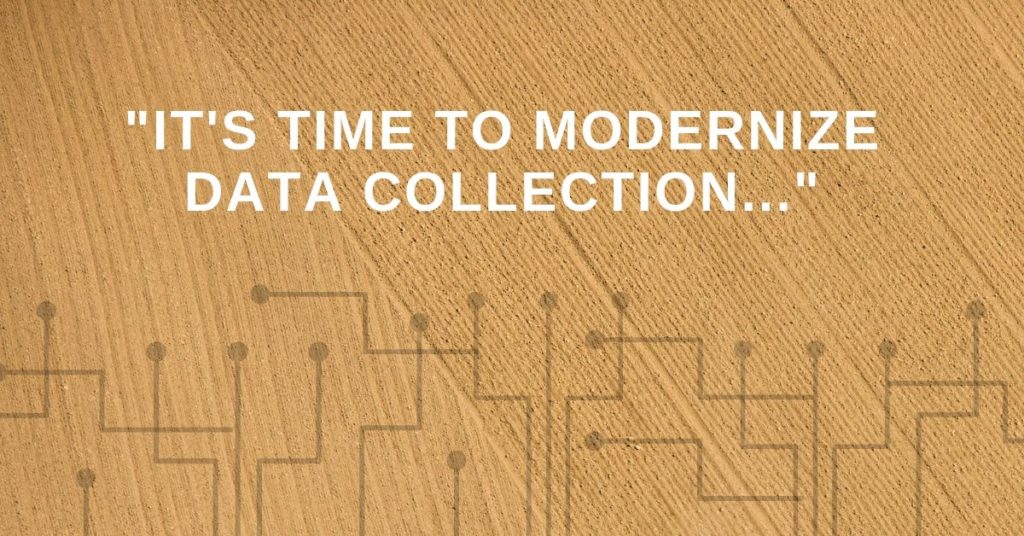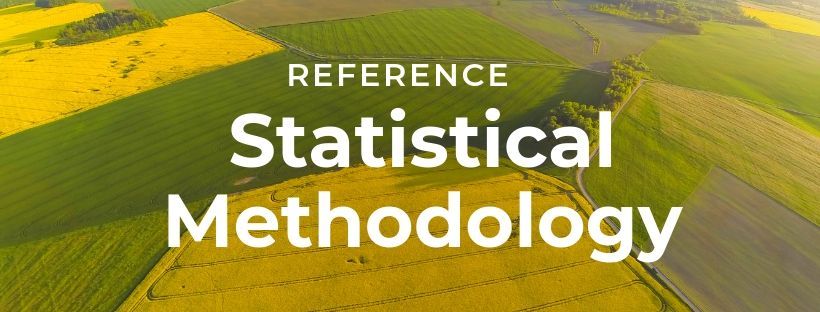USDA should be paying farmers for their data (NASS, FSA, RMA, NRCS)

By Jason Tatge, Farmobile co-founder and CEO
. . .
On June 28, the USDA’s National Agricultural Statistics Service (NASS) released a report on “planted” or “intended” planted acres of major crops for the U.S. 2019 growing season. This report was a major market mover because the information released by NASS was very different than what the market was expecting.
Anyone who lives in the corn and soybean belt knows that this year’s planting season has been plagued with record-setting rainfall, and there are many acres that are either currently underwater or have yet to be planted.
Ground-truthing USDA’s June acreage report
To put this in context, it’s important to understand a few of the major agencies responsible for collecting planting and harvest information about our food system. The USDA is the parent to several government agencies that administer programs requiring some form of planting and/or harvesting data to be gathered in order to populate their models and programs. Some of these agencies include the National Agricultural Statistics Service (NASS) with a $180 million 2018 annual budget; Farm Service Agency (FSA) with a $1.5 billion 2018 annual budget; Risk Management Agency (RMA) with a $8.3 billion 2018 annual budget; and Natural Resources Conservation Service (NRCS) with a $4.4 billion 2018 annual budget.
To be fair, with the exception of NASS, these agencies’ multi-billion dollar annual budgets include funding for the programs they administer; but a portion of each goes toward collecting data from farmers and ranchers about their crops and livestock numbers. An example of how these agencies work is last year’s Market Facilitation Program (MFP), administered by the FSA. It required submissions of 2018 harvest production data to entitle farmers to additional government payments due to ongoing trade disputes. The FSA submission date for 2018 harvest production data was May 31, 2019 (approximately six months after the 2018 harvest). Below is a schedule of what some of the commodities were worth via the MFP for those who submitted their data:
- Soybeans, $1.65/bu.
- Corn, $.01/bu.
- Wheat, $.14/bu.
- Sorghum, $.86/bu.
- Cotton, $.06/lb.
According to an article in Successful Farming late last year, “the MFP payment will be made after a producer harvests 100% of the crop and provides reliable production records to the Farm Service Agency (FSA). A reliable production record includes copies of receipts, ledgers of income, income statements of deposit slips, register tapes, invoices for custom harvesting, or contemporaneous diaries that are determined acceptable by the FSA county committee.”
Importantly, MFP is a self-certification program and subject to spot checks of your production evidence.
Another key reality of today’s system is that very little data-sharing happens between these agencies. This results in massive duplication of efforts (and agency contradiction) of what should be the same traditional survey methods for data collection and/or personal interview-based reporting at local county FSA offices. Much of the exact same planting and /or harvest information, collected from FSA and NRCS program participation, is also required to participate in the RMA’s crop insurance programs.
A path forward to modern data collection
In the past, the USDA has tried to modernize its systems with disastrous results. In 2012, the FSA announced the Modernize and Innovate the Delivery of Agricultural Systems (MIDAS) program, intended to act as a more efficient IT system to streamline aid programs for farmers. However, after spending nearly a half billion dollars, the USDA has only finished one out of 66 of the project’s tasks.
It’s time to modernize the way we’ve collected data for the last 30-plus years. It can be done.
It’s time to modernize the way we’ve collected data for the last 30-plus years. It can be done. Healthcare has given us a pretty good model to follow. The Health Information Technology for Economic and Clinical Health (HI TECH) was a bipartisan effort in the 2009 stimulus bill designed to create new jobs and entice hospitals to finally go digital. Those that meet certain milestones – such as using computer systems to order medicines, detect deadly errors and keep patient records – get payments. Any hospital that doesn’t have “meaningful use” of IT by 2015 (six years later) will face a cut in reimbursements.
Ultimately, this was a market-based system. It allows hospitals to choose among rivals such as Cerner, Allscripts and General Electric; but, at the same time, heavily encouraged hospitals to modernize their outdated information technology systems with whatever solution they chose.
There are parallels to agriculture today. Extremely low cost systems exist to collect, organize, process and share the farm data in real-time. We’re just not yet using – or incentivizing – them. These tools will massively improve the timely flow of real, ground-truthed data to the markets in a much more efficient and accurate manner, preventing market shocks like the one we just experienced.
Full disclosure, I am the CEO of Farmobile, an independent data company which provides these services to farmers, ag retailers and trusted advisors. Other, non-independent companies like John Deere and Bayer-Monsanto, also, offer digital services; however, I have learned that many farmers have concerns about providing these companies with the complete access to their “formulas” for fertilizing, planting, use of crop protection, and ultimate harvest results for specific fields.
Aligning incentives around “ground-truthed data” for a modernized future
Imagine a world where the USDA chose to pay farmers, let’s say, $1/acre for complete digital planting and harvest production data collected by a device in their farming machines. The USDA agencies (NASS, FSA, RMA, NRCS) could split this $1/acre up into fourths, and that would amount to about $80 million/year/agency. Importantly, the data would be completely interoperable.
The really cool part about this hypothesis is that it aligns the incentive structure for the farmers to collect good data and the buyer, in this case the USDA, only pays for complete data. This method essentially takes the risk out of the data collection process, because as a buyer, you would only pay for data that is complete per your requested standards.
Think of this as a futures market for data. It allows for the data buyers to ask for the data that they need (again using the USDA and sub agencies NASS, FSA, RMA, NRCS example). This could be planting dates, commodity types, planted acreage and, later in the year, harvest dates, harvested commodity types, harvest production and harvested acres.
The fact that we have the technology today to collect, process, organize and share this data on a second-by-second basis allows for a massive improvement to the data’s accuracy ….
The fact that we have the technology today to collect, process, organize and share this data on a second-by-second basis allows for a massive improvement to the data’s accuracy when augmented with the traditional data survey collection methods employed by theses agencies today.
There’s an innovation benefit, as well. This data can be licensed more than once, speeding up the innovation process and allowing new startups – without decades of mediocre data in the vaults – to rapidly compete with the behemoths of traditional agriculture.
Every year that good quality, ground-truthed, complete, data is available adds even more insights on how the “recipe” for that field performed. This makes the historical data (of the same quality) even more valuable to researchers, risk managers, marketers and sales organizations interested in innovating at the leading edge and creating never-before-imagined services to help keep farmers farming.
On the sell side, farmers benefit from the licensing concept described above as a new revenue source that allows them to completely control who does or does not license their digital data layers. I made the point earlier about some farmers hesitant to share their data with companies that will only find a way to sell it right back to them. Without transparency, there isn’t a fair market.
We have the tools to capitalize on the promise of ag data. Now, the market needs to provide the incentive structure for the farm gate to adopt the tools. It begins with paying for data, aligning incentive structures, and building an agricultural industry based on accurate data.
The USDA is a good starting place, but it is only the beginning.

*Source: USDA Acreage, June 2019, USDA, National Agricultural Statistics Service
- Survey procedures: The estimates of planted and harvested acreages in this report are based primarily on surveys conducted during the first 2 weeks of June. These surveys are based on a probability area frame survey with a sample of approximately 9,000 segments or parcels of land (average approximately 1 square mile) and a probability list frame survey with a sample of approximately 68,100 farm operators. Enumerators conducting the probability area frame survey contact all farmers having operations within the sampled segments of land and account for their operations. From these data, estimates can be calculated. For the probability list frame survey, data from operators was collected by mail, internet, telephone or personal interview to obtain information on these operations. Responses from the probability list frame survey sample plus data from the probability area frame survey sample of operations that were not on the list to be sampled are combined to provide another estimate of planted and harvested acreages.
- Estimating procedures: National, Regional, State and grower reported data were reviewed for reasonableness and consistency with historical estimates. Each Regional Office submits their analysis of the current situation to the Agricultural Statistics Board (ASB). Survey data are compiled to the National level and are reviewed at this level independently of each State’s review. Acreage estimates were based on survey data and the historical relationship of official estimates to survey data.
- Revision policy: Estimates of planted acres for spring planted crops are subject to revision in the August Crop Production report if conditions altered the planting intentions since the mid-year survey. Planted acres may also be revised for cotton, peanuts, and rice in the September Crop Production report each year; spring wheat, Durum wheat, barley, and oats only in the Small Grains Annual report at the end of September; and all other spring planted crops in the October Crop Production report. Revisions to planted acres will only be made when either special survey data, administrative data, such as Farm Service Agency program “sign up” data, or remote sensing data are available. Harvested acres may be revised any time a production forecast is made if there is strong evidence that the intended harvested area has changed since the last forecast.

Jason Tatge
Farmobile co-founder and CEO. Passionate about advocating for the farmer. #FarmerPower.